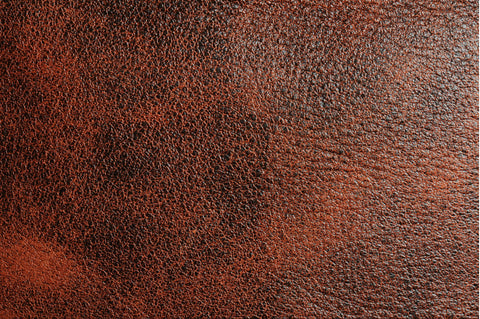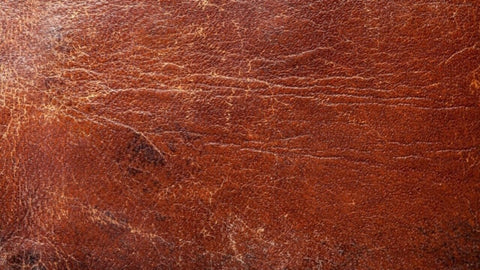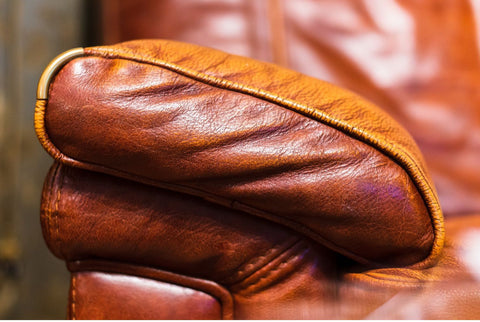
Your favorite leather article all discolored and ruined? This article will be the tonic for restoring the color of your leather item. Follow me!
The appeal of leather cannot be rejected as it is strong, long-lasting, fashionable, and simple to maintain. Leather furniture in your house exudes luxury, and leather upholstery in your car appears almost royal. However, while cowhide will endure considerably longer than any other substance, it is not indestructible. If not properly maintained for and preserved, the texture of the leather might weaken and fade, and torn leather really does not look nice.
What causes leather discolor?
There are a few fundamental things that can cause leather to become damaged; understanding what they are will help you to quickly maintain your leather furniture or decor and keep it looking great for many decades.
1. EXPOSURE TO SUNLIGHT
Leather’s arch-enemy is the sun, that enormous brilliant orb in the sky. Too much bright sun can not only fade the colour of your leather, but it can also produce damaged leather that seems old and worn. Keep track of whether your leather furnishings are subjected to daylight on a regular basis through a window or via the windows of your automobile. Consider relocating furniture out of direct sunlight and parking in shaded places or in your basement.
And for your leather clothes and bags your wardrobe is the perfect spot so that it doesn’t catch fungus or discolor.
2. EXTREME CHANGES IN TEMPERATURE
Damaged leather can develop if you relocate a piece of leather furniture from a somewhat consistent warm temperature to a substantially cooler or hotter climate. Moving leather boots or bags from inside the home to an outside terrace, for example, or parking your automobile outdoors if the temperature drops significantly at night.
Maintain your furniture pieces in regions where the temperature remains constant to avoid damage. To best keep your car’s leather upholstery, store it in the garage at night to prevent it from temperature fluctuations.
3. NOT CLEANING STAINS RIGHT AWAY
It happens–every now and again, you or someone else may spill that on your leather. If you do not clean it quickly away, the stain may become persistent. A decent leather repair kit will include a corrosion inhibitor or other leather cleaning tools that can assist you in removing the stain without hurting the leather, as harsh chemical treatments may.
4. USE HARSH CHEMICALS AND SOAPS TO CLEAN YOUR LEATHER
Products including strong soaps, detergents, and chemicals might cause damaged leather rather than spotless leather. To ensure that you are correctly caring for your leather, look for specifically formulated leather cleansers and leather restorative kits–other products might create dry, cracked, or dull leather.
5. EXTREME HEAT
Warming up the house is wonderful and cosy, but if your leather is too close to a heating vent, you might end up with damaged leather. Move furnishings away from heating vents, and park automobiles in shaded areas or the garage.
How to fix leather discolor?

Let’s cut to the chase and talk about the materials and tools required:
- Upholstery attachments for vacuums
- Leather cleaning solution that is non-toxic
- a mixing bucket
- 3 microfiber cloths
- Conditioner for leather
- Kit for recoloring leather (for significant colour damage)
- To place beneath your furniture, use a tarp or a blanket.
1. Determine the Leather Type
Determine the sort of leather you’re working with before you begin cleaning the upholstery on your furniture.
The care requirements for various types of leather will vary. Because leather items may range in price from $300 to $4,000, be sure you’re not doing anything that will permanently harm them.
Here are some examples of typical leather types:
- Full-grain leather is often processed little and retains the look and feel of animal hide.
- Top-grain leather provides a more refined appearance and feel than full-grain leather.
- Split-grain leatherhas a comparable feel to full grain leather, although it might be more difficult to maintain.
- Bonded leather is frequently manufactured from scrap leather that has been rolled and pressed.
- Nubuck leather, which is manufactured from rawhide, is more difficult to care for. Waterproofing is required to safeguard it from regular wear and tear.
- Bi-cast leather is a low-cost alternative to split-grain leather that has been coated with polyurethane to mimic the look of more costly top-grain leathers. This sort of leather is susceptible to cracking and peeling if not properly maintained.
- Faux leather is a man-made substitute for genuine leather. It’s an excellent choice for people concerned about their budget or the environmental and ethical implications of leather.
2. Remove Loose Cushions and Vacuum
Remove the cushions and throw away any large pieces of trash or debris that you find (and return the missing remote to the coffee table). Then run your vacuum cleaner’s attachment across the entirety of your leather item.
3. Get Rid of Surface Debris
Use one of your three microfiber towels and either a leather-safe cleaning solution (per the manufacturer’s directions) or a pail of warm water to clean your leather handbag, boots or jackets. Wipe clean your leather items with a moist, but not soaked, microfiber cloth. This will get rid of any surface debris that the vacuuming overlooked, as well as any dust that has resurfaced on the surface.
4. Handle Difficult Stains and Messes
Consider a more targeted technique if your leather handbag, purse, wallet or boots has stains that aren’t easily removed. The following are some typical stains and the best methods for removing them from leather surfaces:
- Rub alcohol can be used to remove ink stains. Small spots can be removed with a Q-tip or cotton swab. Replace out your swab frequently as you work to avoid spreading the stain.
- When dealing with food or blood stains, a mixture of cornstarch and lemon juice might be used. Make a mixture with two parts cornstarch and one part lemon juice and gently wipe it over the damaged area.
- If you have grease or oil stains on your precious leather item, try removing them with an adsorbent powder such as baking soda. Apply generously to the afflicted region and leave it for a few hours and allow it to soak. When you’re through, wipe it up with a dry cloth. If you can’t get the powder off with only a dry towel, try step three.
As with any cleaning, try it on an unobtrusive area before spraying it to a location where colour loss or damage might be visible.
5. Buff the Dry Surfaces
Leaving wet spots on your leather bag, jacket or boots might result in staining or discolouration. So, after cleaning, use a fresh microfiber cloth and run over tiny portions of your furniture in circular movements until they are dry.
6. Retouch the Color of Your Leather Item
If the colour has faded severely due to sun exposure, restore the colour with a leather recoloring kit. In certain circumstances, they can be ordered straight from the manufacturer. If they don’t have them, look for them at a fabric or specialised shop that specialises in leather trim. If you’ve never tried retouching the colour before, you might want to seek professional assistance when it pertains to colour coordinating your leather item to the kit.
Each one of these kits comes with its own set of instructions, so follow the owner’s manual. Ensure to use the sheet to protect any adjacent furnishings or carpeting that may be in the splash zone when working with the recoloring kit, since the dyes might go into areas you don’t like them to.
7. Use a conditioner to protect your leather item.
If the colour of your leather item has not yet faded too much and only requires a minor tone adjustment, a leather booster may frequently provide wonderful effects. These may be found anywhere leather items are offered. When it comes to application and drying time, follow the manufacturer’s instructions.
The tarp will also come in help here, keeping any conditioners soaking onto your floors or other surface.
8. Enjoy your restored royal item
After concentrating on restoring your leather item to its stunning features for a day (or a weekend), using it will feel extra fantastic. Feel the newness of your beloved item again.
What causes dark spots on leather?
Oils from your skin and cosmetics items can leave unattractive smears on your lovely calfskin tote.
To eliminate smudges from leather, begin by blotching up the oil with a white, build-up-free fabric. Sprinkle cornstarch or bath powder over the stain and allow it to sit for the time being.
Wipe the powder away to check whether the stain is no more. On the off chance that not, rehash this interaction or take a stab at utilizing dishwashing fluid. When the stain is taken out, apply the leather conditioner.
How to fix fading leather couch?

To revive the real look of leather furniture and buff out little scratches and blurring, attempt a characteristic leather cleaner like coconut oil. Utilize a spotless, dry material to rub coconut oil into the leather in a roundabout movement, similar as shoe clean. Let infiltrate for 10 minutes, and buff out the overabundance of oil with new, clean material.
How to restore a faded black leather bag?
If you use your leather a lot, then monthly maintenance to your accessories is a must. You cannot leave your leather drying out and fade away its natural color. To restore a leather bag, make sure you are using a good leather conditioner, plus you should not over do it.
Make use of coconut oil as mentioned above to restore the natural color of the leather.




 Mobile/What's App/Wechat
Mobile/What's App/Wechat E-Mail
E-Mail ADD
ADD




